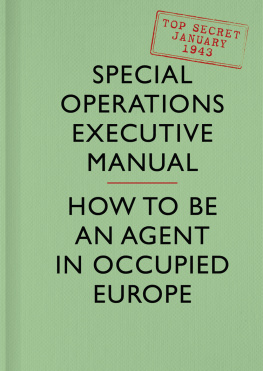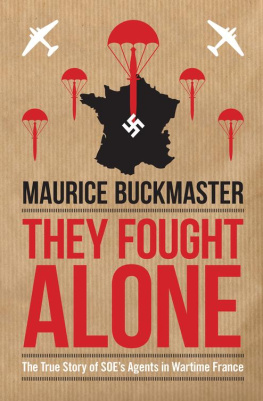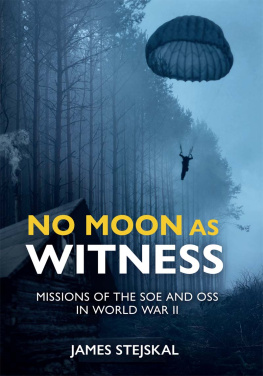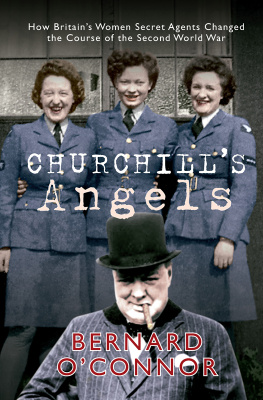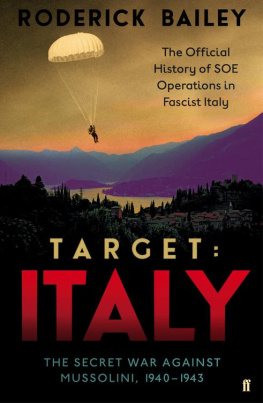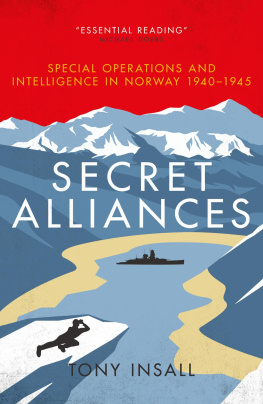SPECIAL OPERATIONS IN NORWAY
SPECIAL OPERATIONS IN NORWAY
SOE and Resistance in World War II
Ian Herrington
Published in 2019 by
I.B.Tauris & Co. Ltd
London New York
www.ibtauris.com
Copyright 2019 Ian Herrington
The right of Ian Herrington to be identified as the author of this work has been asserted by the author in accordance with the Copyright, Designs and Patents Act 1988.
All rights reserved. Except for brief quotations in a review, this book, or any part thereof, may not be reproduced, stored in or introduced into a retrieval system, or transmitted, in any form or by any means, electronic, mechanical, photocopying, recording or otherwise, without the prior written permission of the publisher.
International Library of War Studies
ISBN: HB: 978-1-78831-262-2
eISBN: 978-1-78672-564-6
ePDF: 978-1-78673-564-5
A full CIP record for this book is available from the British LibraryA full CIP record is available from the Library of Congress
Library of Congress Catalog Card Number: available
Contents
Chapter 1
The formation of SOE and its Scandinavian section: A new strategic tool and a Nordic opportunity
Chapter 2
SOE policy in Norway, 19405: The combination of short- and long-term objectives
Chapter 3
SOE and the Norwegian government and military authorities, 19405: Control through collaboration
Chapter 4
SOE and the military resistance in Norway, 19405: Direction, separation and finally partnership
Chapter 5
SOE and the other new organizations operating in Norway, 19405: A military alliance
Chapter 6
SOE and the military and intelligence establishment operating in Norway, 19405: An unexpected partnership
Chapter 7
SOE operations in Norway, 19404: The combination of sabotage and the organization of a clandestine army
Chapter 8
SOE and the liberation of Norway, 19445: Operations in the shadow of overlord
My decision to examine special operations in Norway was prompted by not just my interest in the history of the country during the Second World War but also by Professor Patrick Salmon then at Newcastle University, now chief historian at the Foreign and Commonwealth Office, who took the time to reply to my correspondence and suggested that it was a topic that required and deserved attention.
A large part of my time was originally spent working on the extensive SOE material at Norges Hjemmefrontmuseum (the Resistance Museum) in Oslo. During that time, I received unstinting support from Ivar Kraglund, Frode Fry, Arnfinn Moland and especially Anne Karin Snsteby, who always with a smile responded to my requests for files and helped me locate important material. Working at the museum gave me the opportunity to meet several Norwegian resistance figures including the late Gunnar Snsteby, with whom I had several enjoyable conversations. It also gave me the chance to encounter other Norwegian researchers and historians, such as Berit Nkleby who regularly responded to my enquiries and kindly supplied me with some valuable material, including her excellent study of SIS. I would like to extend my thanks to all of these people. I must also mention my family in Norway, who regularly helped by bringing over to Britain many of the key Norwegian publications that have been so important for my work and which are sadly often unavailable in this country.
At the time of my research, I was ably supported by Mark Seaman, once SOE historian at the Imperial War Museum. Marks knowledge and his willingness to answer my questions and to take the time to discuss and debate issues was a great help. Duncan Stuart, who was the SOE advisor at the Foreign and Commonwealth Office, also assisted by providing me with important documents and detail from SOEs personal files, which at the time of my research were just being released into the National Archives at Kew. My two PhD supervisors, Professor David Ryan and Dr H. P. Willmott were also of great support, not just through reading my work but also by putting forward valuable thoughts and insights that helped in its development.
Finally, I would like to thank those Norwegian historians who have enthusiastically encouraged me to get my original PhD published along with my wife and daughter who have provided unstinting support especially through the difficult times.
| ACAS (ops) | Assistant Chief of the Air Staff (Operations) |
| ACNS (H) | Assistant Chief of Naval Staff (Home) |
| ACO | Advisor on Combined Operations |
| ACOS | Admiral Commanding the Orkneys and Shetlands |
| AI | air intelligence (London) |
| AI 10 | cover name for SOE |
| ALFN | Allied Land Forces Norway |
| ANCC | Anglo-Norwegian Collaboration Committee |
| AL | air liaison section in SOE |
| AT | Arbeidstjenesten (The Labour Services) in Norway |
| B.org | Bedriftsorganisasjonen (The Industrial Organization), a resistance organization in occupied Norway |
| BSS | Bayswater security section |
| C | head of SIS |
| CCS | Combined Chiefs of Staff |
| CCO | Chief of Combined Operations |
| CEO | Chief Executive Officer |
| CIGS | Chief of the Imperial General Staff |
| COHQ | Combined Operations headquarters |
| COS | Chiefs of Staff |
| COSSAC | Chief of Staff to the Supreme Allied Commander (Designate) |
| CS | Sir Campbell Stuarts propaganda department, part of the Foreign Office |
| D | sabotage section of SIS |
| DCO | Directorate of Combined Operations |
| DDOD(I) | Deputy Director, Operations Division (Irregular) at the Admiralty |
| D/F | direction finding, the action of using an aerial to determine the direction of incoming radio waves |
| DK | Distriktskommandoer (District Commanders) |
| DKN | Distriktskommando Nord (the District Commander for northern Norway) |
| DKT | Distrikstkommando Trndelag (the District Commander for the county of Trndelag) |
| DK | Districtskommando st (the District Commander for eastern Norway) |
| DMI | Director of Military Intelligence |
| DNA | Det norske arbeiderparti (the Norwegian Labour Party) |
| DNI | Director of Naval Intelligence |
| DSIR | Department for Scientific and Industrial Research |
| DZ | dropping zone |
| EH | Electra House, the propaganda department under Sir Cambell Stuart |
| FA | Forsvarsstabens krigstidsarkiv 19405, Oslo (the Defence Staff war archives) |
| FANY | First Aid Nursing Yeomanry |
| FD | Forsvarsdepartementet (the Norwegian Ministry of Defence) |
| FD/E | Forsvarsdepartementet Etterretningskontor (the Norwegian Ministry of Defence Intelligence Office) |
| FFK | Flyvpnenes Felleskommando (the Royal Norwegian Air Force Joint Command) |
| FO | Foreign Office |
| FO | Forsvarets Overkommando (The Norwegian Defence High Command) |
| FO II | The Norwegian Defence High Command Intelligence Department |


